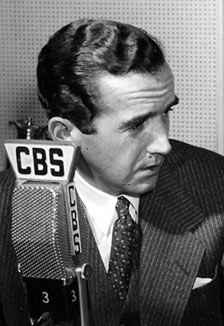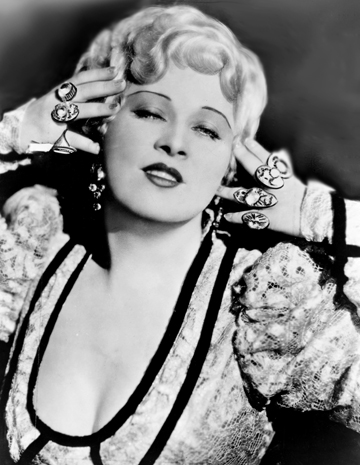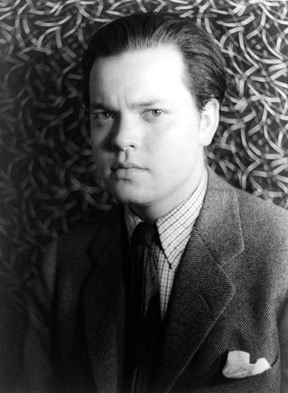The idea: Imagine being able to go back in time and hear some of your favorite old radio programs. (Or your parents or grandparents favorites). You can hear quite a few of those shows on the internet now. It just takes a little preparation and some standard equipment.
The equipment: You need a regular DSL network connection, a recent model computer, and maybe an extra sound system or add-on computer speakers. None of this is terribly expensive or complicated, and there are services that can help if you get stuck.
The preparation: Search for your favorites and test them out beforehand. Remember your place with a browser page bookmark. Turn down lights, set the scene. Ask your audience to close their eyes in order to experience the “theater of the mind.” This is the old media – It’s what people did before TV, when everyone had to use their imaginations.
Favorites from the Golden Age of Radio
Comedy: Mae West is bored with the Garden of Eden in this Dec. 12, 1937 comedy sketch on NBC. In the second half of the show, Mae West and Charlie McCarthy trade double entendres. Some of the sketch was seen as too “racy” for radio. NBC got a reprimand for this from the Federal Communications Commission. and Mae West was banned, even though she had nothing to do with writing the script.
Westerns: The Lone Ranger — An idea by radio writer Fran Striker turned into a popular sensation in 1933. In this clip, the show starts at 1:08. “Return with us now for the next 30 minutes and we’ll tell you a story of the Golden West of yesterday …”
Comic book heroes: Little Orphan Annie was a cartoon character translated to radio in the 1930s. The actual story in this clip starts at 2:30, which gives you some idea of why the FCC was complaining about over-commercialization of radio at the time. (One response this FCC criticism was the CBS program called the “Mercury Theater,” which was created to air commercial-free versions of classic books such as the Count of Monte Christo and (of course) the War of the Worlds, which is linked below).
Mysteries: The Shadow — A 1938 radio drama — that’s Frank Readick doing the introductory sequence but Orson Welles doing the main character acting. Also — The man who murdered time At 3:30 on this page, there’s an interesting statement about radio itself: “Thirty years ago, the notion that a human voice could circle the earth would not only have been called fantastic, but impossible.” A similar hero was Captain Midnight.
Science Fiction: Flash Gordon — The amazing interplanetary adventures of Flash Gordon and Dale Arden. This is the first episode broadcast on April 22, 1935 where he and Dale meet Professor Zarkov. The radio program was usually a step-by-step adaptation of the printed comic book.
Teen romance: A Date with Judy radio comedy. Not well remembered today but funny and pitched to the feminine audience.
Comedy: Amos n’ Andy — Stereotyped and deeply offensive by modern standards, this comedy by two white guys pretending to be African-Americans — Freeman Gosden and Charles Correll — served as a platform for social commentary, as shown by this sketch from the fall of 1928 during Al Smith – Herbert Hoover election. At the time, most radio programming involved sermons and symphonies — the “high brow” stuff. But Gosden and Correll started their own pre-recorded syndicate and in the process, revolutionized radio. By 1943, Amos n’ Andy was improving, a little, and the actors portray their characters as more intelligent (although still clueless), as y0u can hear in this show about a defamation suit.
War of the Worlds
The reason War of the Worlds (Oct 31, 1938) fooled so many people was that Wells and his crew studied the style of Herbert Morrison’s broadcast of the Hindenburg disaster of 1937.)
War of the Worlds broadcast on Sunday, Oct. 30, 1938, by the CBS Mercury Theater directed by Orson Wells. (The Mercury Theater site also has other interesting Wells radio dramas).
Jack Benny radio program Nov. 2, 1941 on NBC. Show starts at 1:55. A little more than a month later the world would change as America entered World War II.
Wartime radio
The run-up to war: home front
US President Franklin Delano Roosevelt’s fireside chats were the first time a president used the radio consistently to reach out to the public.
This Fireside Chat from April 29, 1935, like many in the 1930s, was an attempt to project confidence during the great Depression. By 1940, a more somber FDR would tell audiences of the danger of Nazi victory. And by January 11, 1944, another Fireside Chat on the Bill of Rights would remind Americans of the economic rights they were also fighting for. Text of the Fireside Chats is available here.
Father Charles Coughlin — A growing radio power in 1936, but cut off the air by NBC and CBS for racist and pro-Nazi remarks by 1939. Here’s a radio address from November of 1938 after “Krystalnacht.” — Not Antisemitism but Anti-Communism. For other broadcasts see I am the Witness web site.
Amy Semple Macpherson was a radio evangelist whose politics were not as extreme as Coughlin.
A Day in Radio — Sept. 21, 1939 was a typical day for a US radio station, but war was breaking out elsewhere around the world.
The run-up to war: reporting from Europe
“No one in Europe wants to fight “ says Mutual Broadcasting Service’s John Steele on the day that Austria becomes part of Germany in March, 1938.
“A conquered nation…” — CBS broadcast March 13, 1938, special broadcast from London and Paris. Considerably more insightful than the Mutual broadcast.
Hans Kaltenborn reports August 27, 1939 on Hitler’s demands just before the invasion of Poland.
Dark early days of WWII
Winston Churchill’s famous “Fight them on the Beaches” speech, June 4, 1940. The best-remembered parts of the clip start at 1:07.
William L. Shirer reported from Berlin the days before and after the German invasion of Poland in 1939.
Elmer Davis reports on the French surrender June 21, 1940.
Edward R. Murrow — This is Trafalgar Square, Aug. 24, 1940.
Entertainment during the war
Fibber McGee and Molly – Christmas 1943 broadcast — Fibber and Molly go shopping for a Christmas tree. Radio and entertainment figures did a lot to keep up morale in WWII.
Sherlock Holmes – Nigel Bruce hosted some of these favorites of the era, many of which were broadcast over Armed Forces Radio.
Marlene Deitrich – “Hello, boys.” A song for the Fifth Army in Italy in 1943.
Covering the war
“Orchestrated Hell” – Edward R. Murrow describes an air raid over Berlin, Dec. 2, 1943.
D-Day — Charles Collingwood, CBS eyewitness report, June 6, 1944.
Drew Pearson reports on the Soviet advance on Berlin, April 22, 1945.
Edward R. Murrow reports on the liberation of the Buchanwald concentration camp, May 1945.
Harry Trumanannounces V-E day in this short clip.
Hiroshima — CBS reports the Hiroshima bomb from the home front Aug 7, 1945.
Nagasaki — British Group Captain Leonard Cheshire, designated as an observer of the US atomic bomb by Winston Churchill, reported for the BBC on the Aug. 9, 1945.
Postwar radio
Edgar Bergen and Charlie McCarthy meet Tallulah Bankhead in this 1946 show. Just after the war radio was still very popular and television was looking for talent.
Burns & Allen — George Burns and Gracie Allen, who were married in life as well as on the air, began their regular CBS radio program in 1934 after spending about ten years in Vaudeville on the stage and appearing from time to time on radio. They made the “crossover” to television on October 12, 1950, at a time when audiences were crossing over as well.
Gunsmoke — This western started on radio in 1952 and quickly moved to television by 1956.
Rock n’ roll saves radio
Television took audiences away from radio in the 1950s, but teenagers discovered new kinds of music from disk jockeys like Allan Freed and Murray the K. The new emphasis on teenage dance music saved radio.
SEARCH SITES
Search here for more of your old-time radio favorites:
- YouTube — http://www.youtube.com
- Old Time Radio Network — http://www.otr.net/
- Old Time Radio Fans — http://www.oldtimeradiofans.com
- Radio Lovers http://www.radiolovers.com
- Mystery Shows — http://www.mysteryshows.com/
- Radio of the 1930s — Great U.Va. web site about culture in the 1930s
- Bob Stepno’s Heroes of the Press — — Also Turn Back the Dial
- CBS Radio Mystery Theater – 1,399 episodes from 1974 – 1982, searchable by plots, actors and writers.
- Radio’s longest running show — The Grand Ole Opry
- The Sounds of History – great site with links to radio news.



